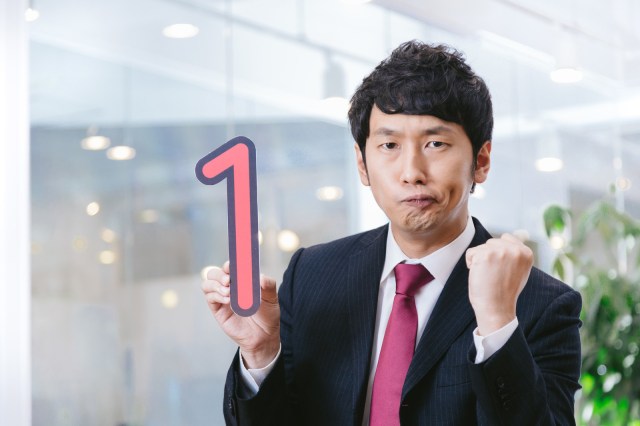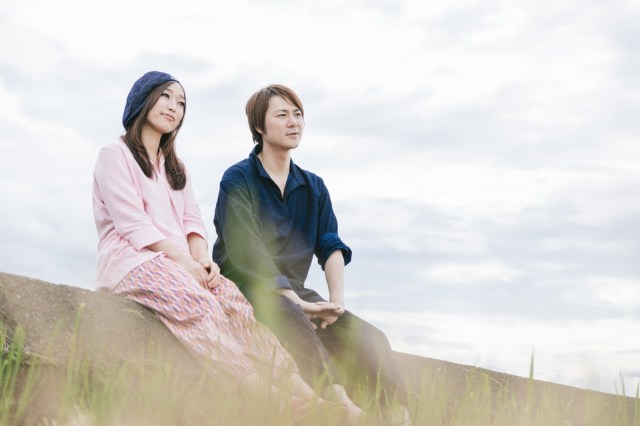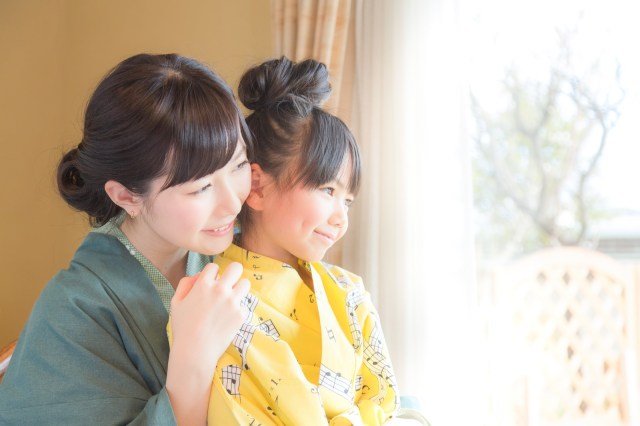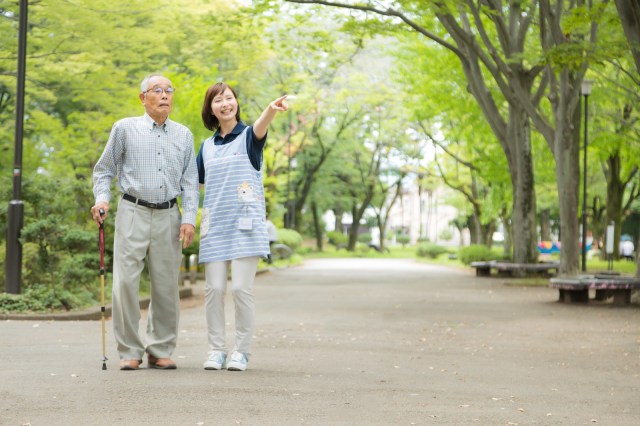
A non-profit study sought to determine the best Japanese prefecture to live in, but found interesting discrepancies.
Japan is an awesome place to live, with beautiful countryside scenery, delicious food, affordable healthcare, and plenty of convenience. But where’s the best place to live in Japan? Well, according to data collected by students and professors of the Graduate School of the University of Tokyo, the answer is Fukui Prefecture.
While this coastal prefecture in central Japan does have stunning landscapes, a cool moated government building, and a cat haven temple that is a dream for anyone, those aren’t exactly the things that matter when it comes to being “the best” place to live (except the cats, maybe). The researchers, who have founded a non-profit forum that researches concepts of “human security,” used 90 different indexes like average lifespan, employment, and interpersonal connection to determine the rankings, with the aim of scoping out issues that are holding Japan back.
Project team representative Yukio Takasu, who was once the United Nations Under-Secretary-General for Management, said the research team grouped various kinds of public data into indexes, which they then used to determine the rankings. Factors like average life span and healthy life expectancy were grouped into the “Life” index, while income, graduation rates, and school promotion rates were included in the “Lifestyle” index. The number of cases of bullying and levels of freedom of speech, among other things, made up the “Dignity” index.
Ranking at the top three of the “Life” index were Aichi Prefecture, Shiga Prefecture, and then Tokyo. In “Lifestyle”, Fukui took the top spot, followed by Toyama and Nagano. Finally, for Dignity, Tokyo was number one, with Nara and Shimane placing second and third. In total, Fukui came out on top, followed by Toyama, Nagano, Tokyo, and Ishikawa.
Ranking on the bottom, after averaging out all the factors, was Aomori prefecture in the far northern reaches of Japan. Okinawa, also in the far reaches, but to the south, was second-to-last, and then Miyagi, which was one of the prefectures devastated in the 2011 Great East Japan Earthquake and Tsunami.
The team also did an individual survey, in which respondents were asked to answer questions about their level of “Self-containment,” which included how satisfied they were with life, and their “Interpersonal connections,” whether they felt lonely and had people to talk to about their troubles. In “Self-containment,” the best rated prefectures were Kagoshima, Miyazaki, Nagasaki, Shimane, and Nara. In “Interpersonal connections”, they were Miyazaki, Ishikawa, Osaka, Kagoshima, and Yamagata.
That’s not surprising given that the majority of those prefectures–Kagoshima, Miyazaki, and Nagasaki–are in Kyushu, which was voted as the top place to live in the Japanese countryside. However, what is surprising is that Fukui, which the data ranked as the best place to live, was ranked as the worst in “Interpersonal connections”. Many respondents answered they are “painfully lonely”, and that they have “no one to confide in in times of trouble”.
Though every area of Tokyo is different, the city as a whole did fairly well on average, ranking as the fourth best place to live when all factors were combined. They did especially well on the points of “Dignity,” since there are a large number of lawyers and non-profit organizations in the big city. Additionally, people in the city generally tend to make more money and have more economic power, which generally leads people to have more satisfaction in their lives. However, Tokyo also suffered on “Interpersonal connections,” and has serious problems regarding a lack of childcare and elderly care, which is probably why it dropped down to number four in the overall rankings.
In truth, what was really brought to light by the study was that all of Japan could benefit by offering more support to the marginalized individuals with Japanese society, such as women, children, the elderly, and the disabled. In particular, the research team recommends incorporating more local involvement in the care of the elderly, so that they don’t feel as lonely, as well as initiatives to employ the elderly to keep them from falling into poverty.
Former U.N. Under-Secretary-General Takasu said that the study is essential in working towards the U.N.’s Sustainable Development Goals, one of which, he says, is to strive towards developing a society where no one is left behind, and to do that Japan has a long way to go. “Bullying, gender discrimination, and poverty are some of the problems we still face in Japan,” he says. “I would like to see them resolved in every region.”
If you’re interested in reading more in detail, you can buy the study results in book form. It’s called “SDGs and Japan” (“SDGsと日本”) and should be available wherever books are sold.
Source: Sankei Shimbun via Yahoo! Japan News via Otakomu
Featured image: Pakutaso
Insert images: Pakutaso (1, 2, 3, 4)
● Want to hear about SoraNews24’s latest articles as soon as they’re published? Follow us on Facebook and Twitter!





 Japanese breast size study shows rapid growth in previously smallest-busted region of county
Japanese breast size study shows rapid growth in previously smallest-busted region of county Kansai area people more genetically predisposed to liking coffee than elsewhere in Japan
Kansai area people more genetically predisposed to liking coffee than elsewhere in Japan Japan is ranked the worst country in the world for helping strangers
Japan is ranked the worst country in the world for helping strangers Japanese netizens vote on which of nation’s prefectures would make the best weapons in battle
Japanese netizens vote on which of nation’s prefectures would make the best weapons in battle Japan’s Japanese population dropping in every part of the country, foreign population rising
Japan’s Japanese population dropping in every part of the country, foreign population rising Japan’s new difficult-to-drink-from beer glass protects your liver, but it’s a brutal experience
Japan’s new difficult-to-drink-from beer glass protects your liver, but it’s a brutal experience How to order snacks on a Shinkansen bullet train in Japan
How to order snacks on a Shinkansen bullet train in Japan Demon Slayer: Kimetsu no Yaiba gets new roller coaster attractions and food at Universal Studios Japan
Demon Slayer: Kimetsu no Yaiba gets new roller coaster attractions and food at Universal Studios Japan New Pokémon ice cream, dessert drinks, and cool merch coming to Baskin-Robbins Japan【Pics】
New Pokémon ice cream, dessert drinks, and cool merch coming to Baskin-Robbins Japan【Pics】 Burger King Japan suddenly adds Dr. Pepper and Dr. Pepper floats to its menu nationwide
Burger King Japan suddenly adds Dr. Pepper and Dr. Pepper floats to its menu nationwide Hello, cosmetics! Clinique teams up with Hello Kitty this summer for first-time collaboration
Hello, cosmetics! Clinique teams up with Hello Kitty this summer for first-time collaboration “The most Delicious Cup Noodle in history” – Japan’s French Cup Noodle wins our heart【Taste test】
“The most Delicious Cup Noodle in history” – Japan’s French Cup Noodle wins our heart【Taste test】 To combat declining birth rate, Japan to begin offering “Breeding Visas” to foreigners
To combat declining birth rate, Japan to begin offering “Breeding Visas” to foreigners Starbucks teams up with Japanese shochu brewery for a whole new coffee experience
Starbucks teams up with Japanese shochu brewery for a whole new coffee experience Studio Ghibli releases giant Totoro plushies in Japan
Studio Ghibli releases giant Totoro plushies in Japan Nintendo history you can feel – Super NES, N64, and GameCube controllers become capsule toys
Nintendo history you can feel – Super NES, N64, and GameCube controllers become capsule toys Starbucks releases a cute Frappuccino and Unicorn Cake…but not in Japan
Starbucks releases a cute Frappuccino and Unicorn Cake…but not in Japan Kyoto Tower mascot termination reveals dark side behind cute Japanese characters
Kyoto Tower mascot termination reveals dark side behind cute Japanese characters McDonald’s Japan’s Soft Twist Tower: A phantom ice cream only sold at select branches
McDonald’s Japan’s Soft Twist Tower: A phantom ice cream only sold at select branches Yabai Ramen: What makes this Japanese ramen so dangerous?
Yabai Ramen: What makes this Japanese ramen so dangerous? Finally! Nintendo Japan expands Switch 8-bit controller sales to everybody, Online member or not
Finally! Nintendo Japan expands Switch 8-bit controller sales to everybody, Online member or not Japanese government wants to build luxury resorts in all national parks for foreign tourists
Japanese government wants to build luxury resorts in all national parks for foreign tourists 10 things you should buy at 7-Eleven in Japan
10 things you should buy at 7-Eleven in Japan Studio Ghibli releases anime heroine cosplay dresses that are super comfy to wear
Studio Ghibli releases anime heroine cosplay dresses that are super comfy to wear Woman charged for driving suitcase without a license in Osaka
Woman charged for driving suitcase without a license in Osaka Studio Ghibli unveils My Neighbour Totoro miniature house model
Studio Ghibli unveils My Neighbour Totoro miniature house model Kyoto experiencing problems with foreign tourists not paying for bus fares, but not on purpose
Kyoto experiencing problems with foreign tourists not paying for bus fares, but not on purpose Fighting mild hunger with a Japanese soda that turns into jelly in the stomach【Taste test】
Fighting mild hunger with a Japanese soda that turns into jelly in the stomach【Taste test】 Studio Ghibli’s Howl’s Moving Castle tapestry unveiled in Japan for first time
Studio Ghibli’s Howl’s Moving Castle tapestry unveiled in Japan for first time McDonald’s new Happy Meals offer up cute and practical Sanrio lifestyle goods
McDonald’s new Happy Meals offer up cute and practical Sanrio lifestyle goods Sales of Japan’s most convenient train ticket/shopping payment cards suspended indefinitely
Sales of Japan’s most convenient train ticket/shopping payment cards suspended indefinitely Sold-out Studio Ghibli desktop humidifiers are back so Totoro can help you through the dry season
Sold-out Studio Ghibli desktop humidifiers are back so Totoro can help you through the dry season Japanese government to make first change to romanization spelling rules since the 1950s
Japanese government to make first change to romanization spelling rules since the 1950s Foreigner’s request for help in Tokyo makes us sad for the state of society
Foreigner’s request for help in Tokyo makes us sad for the state of society Ghibli founders Toshio Suzuki and Hayao Miyazaki contribute to Japanese whisky Totoro label design
Ghibli founders Toshio Suzuki and Hayao Miyazaki contribute to Japanese whisky Totoro label design Doraemon found buried at sea as scene from 1993 anime becomes real life【Photos】
Doraemon found buried at sea as scene from 1993 anime becomes real life【Photos】 Tokyo’s most famous Starbucks is closed
Tokyo’s most famous Starbucks is closed Princesses, fruits, and blacksmiths: Study reveals the 30 most unusual family names in Japan
Princesses, fruits, and blacksmiths: Study reveals the 30 most unusual family names in Japan Which prefecture has the most chilled young people? Survey asks 20 year olds “what are you worried about?”
Which prefecture has the most chilled young people? Survey asks 20 year olds “what are you worried about?” Which Japanese city is gaining interest among families and renters? Hint: it’s not in Tokyo
Which Japanese city is gaining interest among families and renters? Hint: it’s not in Tokyo Five of the worst areas to live in and around Tokyo
Five of the worst areas to live in and around Tokyo The top 10 universities in Japan determined by 2021 World University Rankings
The top 10 universities in Japan determined by 2021 World University Rankings When do Japanese women have their first kiss? Survey finds gap between different parts of Japan
When do Japanese women have their first kiss? Survey finds gap between different parts of Japan Top five Japanese prefectures for childhood education expenditure would make any wallet shudder
Top five Japanese prefectures for childhood education expenditure would make any wallet shudder Terrific Tochigi! Japanese prefecture proves its beauty with scenery showcase【Video】
Terrific Tochigi! Japanese prefecture proves its beauty with scenery showcase【Video】 Sports-playing Japanese junior high students at an all-time low, survey finds
Sports-playing Japanese junior high students at an all-time low, survey finds Japanese net users react to the results of the 2018 Global Liveability Index
Japanese net users react to the results of the 2018 Global Liveability Index Magazine survey picks Japan’s 10 best towns to live in
Magazine survey picks Japan’s 10 best towns to live in Japanese city makes list of world’s top 10 most livable cities, but not one most people expected
Japanese city makes list of world’s top 10 most livable cities, but not one most people expected The price of newly built apartments in central Tokyo skyrocketed over 100 million yen last year
The price of newly built apartments in central Tokyo skyrocketed over 100 million yen last year Balance of intelligence factors makes Japan the world’s smartest country, according to this list
Balance of intelligence factors makes Japan the world’s smartest country, according to this list We visited Fukui Station to see the dinosaurs! No Chris Pratt, but the Dino Doctor was in!
We visited Fukui Station to see the dinosaurs! No Chris Pratt, but the Dino Doctor was in! Shizuoka Prefecture may lose title of Japan’s top tea producer to rising star Kagoshima
Shizuoka Prefecture may lose title of Japan’s top tea producer to rising star Kagoshima
Leave a Reply